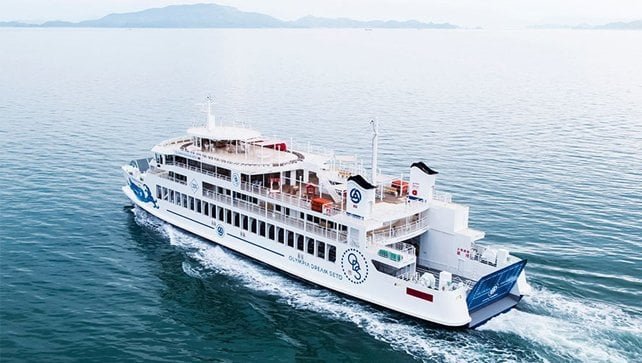The Estonian State Fleet is progressing with plans to launch one of the largest hydrogen-fueled, electric RoPax ferries in 2026. The national ferry operator has been working on the innovative design since 2021, and recently concluded a tender for the shipyard to construct the vessel. The zero-emission ferry, which has been approved by Lloyd’s Register, will feature a fully electric drive that can operate from batteries charged while docked or from hydrogen-fueled power cells.
The ferry will have over 1,000 linear meters for cars, and will be able to operate in Estonian ice conditions with lower energy consumption. It will also provide approximately 20 percent more space than previous generations of ferries, accommodating nearly 200 passenger cars or a mix of large trucks and passenger cars. Additionally, it will be able to accommodate 700 people and provide a lounge area, restaurant, and cabin spaces for the crew. The Estonian State Fleet plans to finance the shipbuilding with the European Modernization Fund and CO2 quota fee revenue, with the vessel expected to enter service on October 1, 2026.
The new ferry is designed to be highly efficient and to take advantage of future developments, including systems for automatic movement and decision support. It is also designed to be ready for remote operations, and will connect the Estonian mainland with its two largest islands, Saaremaa and Hiiumaa. Despite the challenges involved in the complex endeavor, including regulatory hurdles, technological risks, and significant initial investments, the potential benefits are considerable.


















